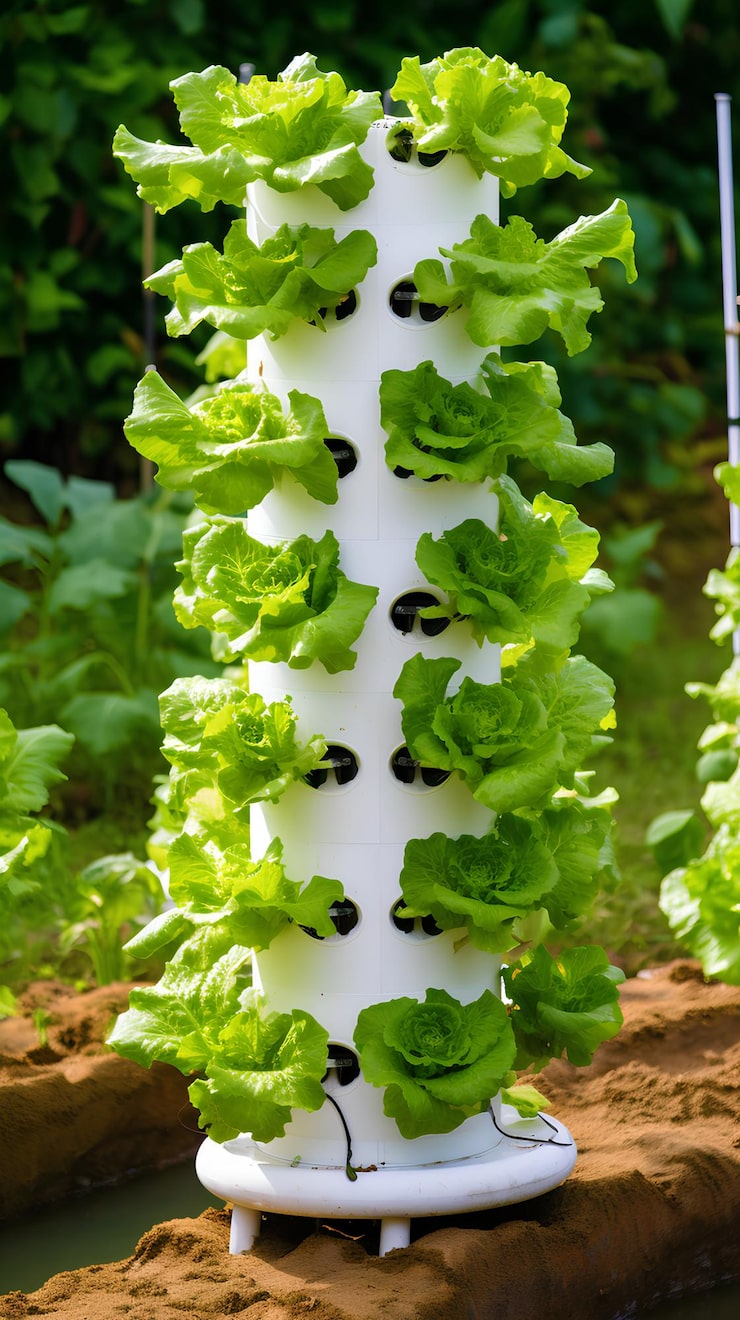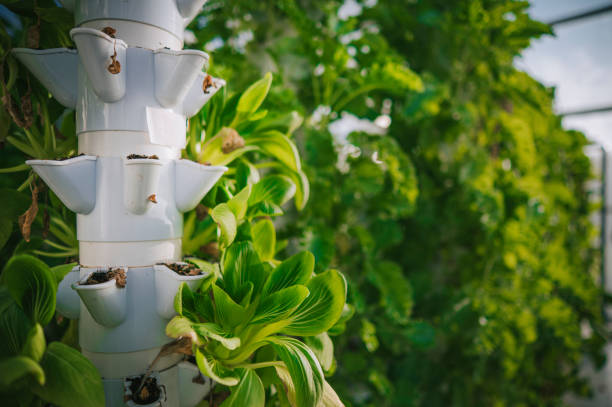Growing your own food has never been more accessible, even for those with limited space. Hydroponic towers represent a revolutionary shift in how we approach home gardening. These innovative systems, often referred to as vertical gardens, allow you to cultivate a wide variety of plants without soil, using significantly less water and space than traditional methods. Whether you live in a bustling city apartment or a suburban home with a small patio, a hydroponic tower can turn any corner into a lush, productive garden. This article explores the ins and outs of these remarkable systems, from their core benefits to what you can grow and how they work.
What Makes Hydroponic Towers a Game-Changer?
Hydroponic towers are essentially self-contained ecosystems designed for maximum efficiency. Unlike conventional gardening, where plants draw nutrients from the soil, these towers use a nutrient-rich water solution that is delivered directly to the plant’s roots. This direct feeding method, combined with the vertical structure, creates an environment where plants can thrive.
One of the most compelling advantages is the incredible space efficiency. A single hydroponic tower can grow as many plants as a small traditional garden bed, all within a footprint of just a few square feet. This makes them ideal for small homes, balconies, and even indoor living spaces. The vertical design maximises yield per square foot, making it possible to grow a significant amount of food in a minimal area.
Another key benefit is the drastic reduction in water usage. In a soil-based garden, much of the water is lost to evaporation or runoff. In a hydroponic tower, water is continuously recycled in a closed-loop system, flowing from a reservoir at the base to the top of the tower and back down. This process uses up to 95% less water than traditional farming, making it an incredibly sustainable choice.
The Inner Workings of a Vertical Garden
Understanding how a hydroponic tower operates can demystify the process and highlight its simplicity. At its core, a hydroponic tower is a passive or active system that ensures plants receive a steady supply of water, nutrients, and oxygen.
How It Works: A Step-by-Step Guide
- The Reservoir and Pump: At the base of every tower is a reservoir that holds the nutrient-rich water solution. A small, submersible pump is used to draw this water up to the top of the tower.
- Water Flow: The water is then distributed and allowed to trickle down the inside of the tower, bathing the roots of the plants in the nutrient solution.
- Nutrient Absorption: As the water flows over the roots, the plants absorb the necessary nutrients and oxygen. Since the roots are not compacted in soil, they can more easily take in what they need, leading to faster growth and healthier plants.
- Recycling: The excess water collects at the bottom of the tower and returns to the reservoir, ready to be pumped up again. This continuous cycle ensures that no water is wasted.
This efficient process allows plants to grow up to three times faster than they would in soil. The controlled environment also reduces the risk of pests and diseases that are common in outdoor soil gardens, leading to a more predictable and bountiful harvest.
What Can You Grow in a Hydroponic Tower?
The versatility of a hydroponic tower is one of its most appealing features. While they are particularly well-suited for certain types of plants, the list of what you can grow is surprisingly long.
- Leafy Greens: Lettuce, kale, spinach, and Swiss chard are some of the most popular choices. Their rapid growth cycles make them perfect for frequent harvesting.
- Herbs: Basil, mint, chives, parsley, and rosemary thrive in these systems, providing a constant supply of fresh flavor for your kitchen.
- Fruiting Plants: Smaller varieties of tomatoes, cucumbers, and peppers can also be grown successfully. For fruiting plants, especially when grown indoors, you may need to assist with pollination, but many towers are also suitable for outdoor use where natural pollination can occur.
- Other Vegetables: Arugula, shishito peppers, and even strawberries are excellent candidates for a vertical garden.
The ability to grow such a diverse range of produce means you can create a personalized, year-round harvest right in your home.

Choosing the Right Hydroponic Tower
When selecting a hydroponic tower, several factors come into play. Consider the following to ensure you choose a system that fits your needs:
- Size and Capacity: How much space do you have? How many plants do you want to grow? Towers come in various sizes, so you can find one that fits a small balcony or a spacious living room.
- Lighting: If you plan to grow indoors, built-in LED grow lights are a crucial feature. Look for adjustable, full-spectrum lights that can be placed on a timer.
- Durability: A high-quality tower should be made from food-grade, durable materials that won’t degrade over time, especially if you plan to use it outdoors.
- Ease of Use: Features like a water level gauge, an easy-to-fill reservoir, and a simple setup process will make your gardening experience much more enjoyable. Some systems even come with wheels for easy portability, allowing you to move your garden between indoors and outdoors as the seasons change.
Conclusion
Hydroponic towers are revolutionising home gardening by making fresh, organic produce accessible to everyone, regardless of their living situation. They are a testament to how innovative technology can make sustainable living not just a possibility, but a reality. By using up to 95% less water and enabling faster growth, these systems are an incredibly efficient and eco-friendly way to cultivate your own food.
If you are looking to start your journey into urban gardening, a vertical garden is an excellent place to begin. The ALTO Garden GX Tower offers a robust and user-friendly system, designed to help you grow a variety of plants with minimal effort. Its advanced features and durable construction make it a perfect choice for anyone looking to enjoy the benefits of home-grown, organic food.









